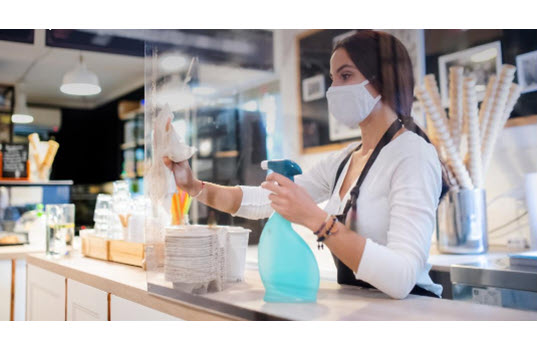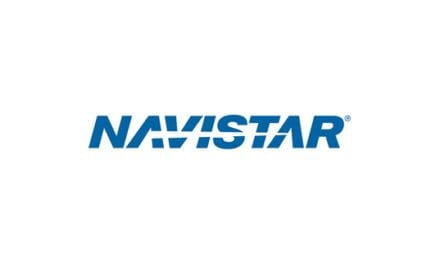By Mike G. Zahajko
C-store shoppers are returning with higher expectations around safety and cleanliness. Fortunately, the need to clean is not new and many retailers are prepared. For those now beginning the journey—it all starts with making cleanliness a priority.
Why focus on cleaning? In short, customers buy more from clean stores. A clean experience in the forecourt drives traffic in-store. Shoppers now associate cleanliness with safety. Recent convenience industry studies show that stores with an above-average cleaning rating generate 21% more visits than their below-average peers. Retailers implementing initiatives to improve cleanliness report a 7-15% increase in sales.
Customers are now starting to demand more when fueling up. An unkempt forecourt gives the impression interior cleanliness will also be lacking, which in turn, prevents more sales inside.
So how do you get a store’s team to buy-in and execute on a cleaning program? Here are five strategies to improve cleanliness.
1) Put on your “customer goggles.”
First, we need to train store employees and leaders to put on their “customer goggles” and view their site from the customer perspective. Consider what customers walk on, what they touch and where their eyes gravitate to while standing at the pump.
- Are specific conditions in the forecourt giving customers a negative impression?
- Are there potential slip and fall hazards?
- Is there grime outside that will stop a hungry customer from coming into the store?
- How do the diesel and gasoline nozzles look?
These outdoor forecourt components are a convenience store’s official “handshake” with each customer. Bonus Tip: Study what customers are saying in online reviews.
2) Build a plan for both indoor and exterior cleaning.
Most people first learn how to clean at home. You could be the best at shining up the kitchen or bathrooms in your house, but cleaning in the fuel world is vastly different. Not only are the chemicals different, but the cleaning challenges are larger and significantly more demanding.
Employees need coaching to view cleaning as “a specific solution to a specific problem.” There isn’t one catch-all product to take care of all the many cleaning challenges in the forecourt. C-store employees need to learn to identify specific problem areas and know which cleaning product to grab. This is where properly implemented training brings high value—as the wrong product selection means wasted supply dollars and labor. C-stores often benefit from having a cleaning “program” with posters or other types of documentation that connect the problem areas with the specific chemical on the shelf.
3) Set site standards and build in accountability.
In today’s c-store, most task management and training focus on activities like running the register or stocking products, while proper procedures for cleaning get overlooked. Pride rides and mystery shops are great tools to maintain site standards, but what about all the time in between?
There’s a saying—what my boss finds interesting, I find fascinating. Bar none, the best way to get clerk-level buy-in is for operations management at the district and division level to let it be known, loud and clear, that cleanliness is not just important to the customers, but it is very important to management as well. They need to set the expectation early and often on cleanliness.
Best-in-class operators make cleanliness an everyday priority with budgeted labor hours, checklists, cleaning champions and management site walks.
4) Optimize labor with training.
It may seem rudimentary to go over proper use of cleaning products; however, cleaning dispensers, oil stains and responding to fuel spills isn’t something employees learned at home. Furthermore, about 80% of the cost of cleaning is labor. Effective and repeated training is the best way to lower the cost of cleaning. We have found that chunking cleaning tasks into bite-size pieces, as well as providing a time expectation of how long the task will take, is highly effective in reducing labor hours spent cleaning. These tips come in extremely handy when staff shortages exist.
Let’s face it, training on how to clean isn’t the most exciting thing in the world, but you can make it relevant by teaching employees why it’s important to the business.
To meet c-store online training needs CAF created CAF Academy—adaptable interactive training that can be added to virtually any platform. Our immersive demonstration videos include short, interactive modules that check for understanding. Leverage computer-based learning to minimize the impact and toll of high industry employee turnover on store managers.
5) Select a cleaning partner—not just a cleaning product.
If you go into the back room at a c-store you won’t find a shortage of cleaning products. Many products have probably been there for years, unused. Even the best cleaning products fail to get the job done when they aren’t used. Training, accountability and a comprehensive cleaning program are critical. A partner should provide operational support for all three items.
 Mike G. Zahajko is the executive vice president, sales for CAF. CAF is a leader in outdoor cleaning and c-store image solutions. For more about CAF, visit www.mycaf.com.
Mike G. Zahajko is the executive vice president, sales for CAF. CAF is a leader in outdoor cleaning and c-store image solutions. For more about CAF, visit www.mycaf.com.








